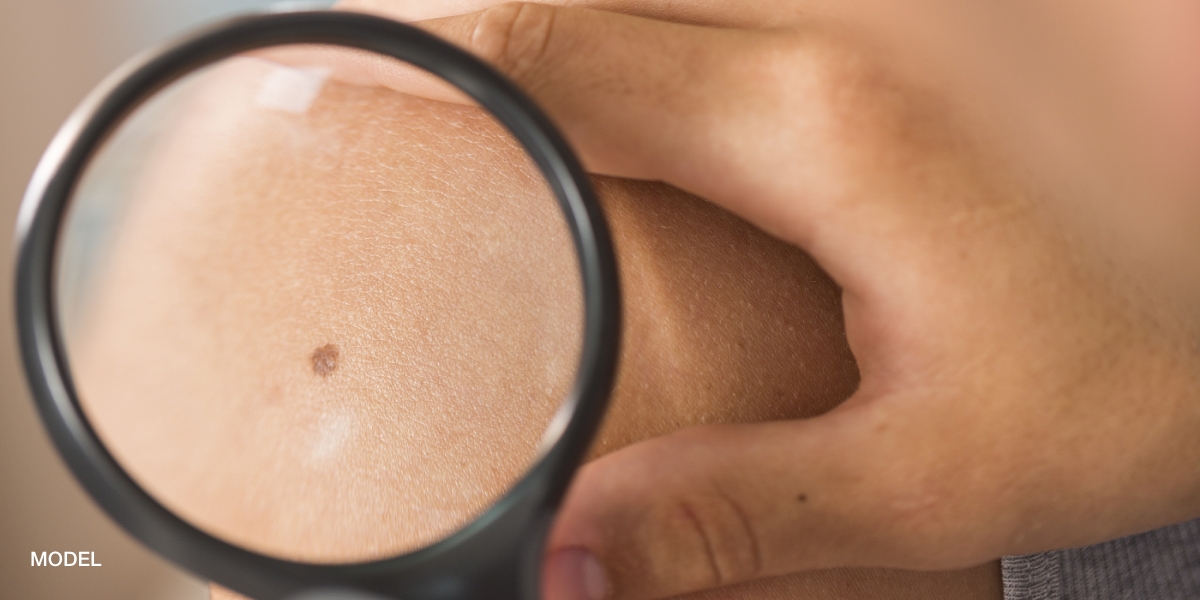October 3, 2025
Skin cancer is the most frequently diagnosed cancer in the United States. It is also one of the most curable when identified at an early stage. The difficulty is that not every cancerous lesion appears unusual. Some cancers can appear subtle, even ordinary, in the beginning. Understanding what to watch for and when to schedule a dermatology visit can make all the difference.
At Perri Dermatology, Dr. Perri focuses on skin cancer detection and treatment, offering screenings, biopsies, and personalized care for patients who want answers without unnecessary waiting.
The ABCDEs of Melanoma
Melanoma is one of the most serious types of skin cancer. A helpful tool for identifying concerning moles is the ABCDE rule:
- A – Asymmetry: One half of the mole does not match the other.
- B – Border: Edges look irregular, blurred, or jagged.
- C – Color: Multiple shades, such as brown, black, red, or white, within one mole.
- D – Diameter: Larger than a pencil eraser, although smaller melanomas are possible.
- E – Evolving: Any change in size, shape, color, or new symptoms like bleeding or itching.
The earlier skin cancer is found, the simpler and more effective treatment can be. Many spots turn out to be harmless, but you should not have to live with worry. When in doubt, it is always best to schedule a skin cancer screening.
What Can Skin Cancer Look Like?
Not all skin cancers resemble moles. The two most common non-melanoma types, basal cell carcinoma and squamous cell carcinoma, often show up differently:
- Shiny or pearly bumps that keep growing
- Flat pink or red patches that spread slowly
- Rough or crusty spots that may resemble eczema or psoriasis
- Sores that close and reopen in the same area
These cancers may grow more slowly than melanoma, but they can cause serious damage to the skin and underlying tissues if untreated.
Subtle Signs of Skin Cancer That Are Easy to Miss
Skin cancer does not always appear dramatic. Sometimes the warning signs are much quieter:
- A patch of skin that looks scar-like without a history of injury
- A small sore that bleeds easily with minor friction
- Persistent irritation, itching, or tenderness in one area
- Redness that lingers well beyond normal healing time
Any skin change that stays beyond a few weeks is worth a closer look.
Why a Professional Skin Exam Matters
Checking your own skin regularly is important, but it has limits. Areas such as your scalp, back, or behind the ears are difficult to examine on your own. During a skin cancer screening, Dr. Perri can focus on your specific concern while also scanning for anything else that may require attention. He uses advanced lighting and medical expertise to detect what the eye alone might miss.
When to Schedule a Skin Cancer Screening
You should schedule a dermatology visit if you notice:
- A mole or spot that looks different from the rest of your skin
- A sore that does not heal within a few weeks
- A new growth appearing after age 30
- Rapid or unusual changes in a mole you already have
Only a biopsy can confirm whether a spot is cancerous. By seeing dermatologist Dr. Perri, you give yourself the best chance at early answers and the widest range of treatment options if cancer is found
Move Forward With Certainty
Questioning if a spot on your skin might be cancer is not something to wait on. The most reliable way to know is through a professional exam. At Perri Dermatology, board-certified dermatologist, Dr. Perri takes the time to perform every screening personally, speak with you one-on-one about biopsy results, and guide you through the next steps. Patients choose us because they never feel left in the dark. Remember, when in doubt, it’s always best to schedule a screening. Schedule your screening today.




